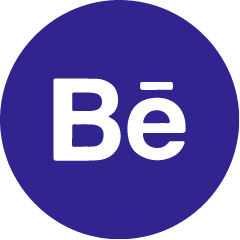In today’s digital landscape, online advertising is no longer a luxury but a necessity for businesses aiming to thrive. With various powerful tools and channels available, companies can effectively acquire and retain customers. In this comprehensive guide, we will explore the essential online advertising methodology that can unlock success for your business.
Understanding the Basics of Online Advertising
Online advertising encompasses a wide range of strategies designed to promote products or services via the internet. It includes various formats such as pay-per-click (PPC), display ads, social media promotions, and more. With the growing digital footprint, businesses must develop a solid online advertising methodology to connect with their target audience effectively.
Initial Analysis and Strategy Formulation
The first step in any successful online advertising initiative is conducting a thorough analysis. Here’s how to approach it:
1. Understanding Your Business Model
- Identify your value proposition and unique selling points (USPs).
- Determine how your product or service meets customer needs.
2. Context and Industry Analysis
- Research industry trends to understand the current market landscape.
- Identify opportunities and challenges specific to your sector.
3. Competitor Analysis
- Analyze your competitors’ advertising strategies and identify their strengths and weaknesses.
- Use tools like SEMrush or Ahrefs to gather insights on their traffic sources, keywords, and ad spend.
4. Target Audience Identification
- Develop customer personas to represent your ideal clients.
- Use demographic, psychographic, and behavioral data to refine your audience targeting.
5. Setting SMART Goals
- Establish Specific, Measurable, Achievable, Relevant, and Time-bound goals that align with your business objectives.
6. Defining Channels and Tone
- Choose the most effective channels (social media, search engines, email) based on your target audience.
- Establish a tone and voice that reflects your brand identity.
Crafting Compelling Content
Content creation is the backbone of your online advertising strategy. Here are key steps to ensure your content resonates with your audience:
1. Brainstorming and Planning
- Collaborate with your team to generate content ideas that align with your customer journey.
- Develop a content calendar to streamline the creation process.
2. Quality Over Quantity
- Focus on producing high-quality, engaging content that addresses your audience’s pain points.
- Use visuals like infographics, videos, and images to enhance engagement.
3. Optimization Techniques
- Optimize content for search engines by incorporating relevant keywords naturally.
- Ensure your content is mobile-friendly and visually appealing to improve user experience.
4. Call-to-Action (CTA)
- Craft compelling CTAs that encourage users to take the next step, whether it’s signing up for a newsletter or making a purchase.
Developing Targeted Campaigns
Once your content is ready, it’s time to develop campaigns that align with your advertising strategy.
1. Campaign Design
- Create campaigns that cater to different stages of the customer journey (awareness, consideration, decision).
- Use A/B testing to determine the most effective ad formats and messages.
2. Channel Selection
- Choose the right platforms for your campaigns, such as Google Ads, Facebook Ads, or LinkedIn Ads, based on where your audience spends their time.
3. Budgeting and Bidding Strategies
- Allocate budgets effectively across channels based on historical performance and expected ROI.
- Use automated bidding strategies to optimize your ad spend.
Monitoring Campaign Performance
Continuous monitoring is crucial for the success of your online advertising efforts. Here are key metrics to track:
1. Key Performance Indicators (KPIs)
- CPM (Cost Per 1,000 Impressions): Measure how much you’re spending to reach your audience.
- CPL (Cost Per Lead): Track how much it costs to generate a lead through your campaigns.
- ROI (Return on Investment): Assess the profitability of your advertising efforts.
- ROAS (Return on Advertising Spend): Determine the revenue generated for every dollar spent on ads.
2. Tools for Monitoring
- Use analytics tools such as Google Analytics, Facebook Insights, or HubSpot to gather data on campaign performance.
3. Regular Reporting
- Create regular performance reports to analyze trends, successes, and areas for improvement.
Continuous Improvement Strategies
The online advertising landscape is ever-evolving, and your strategy should adapt accordingly. Here’s how to foster continuous improvement:
1. Analyze and Iterate
- After each campaign cycle, analyze the results and identify what worked and what didn’t.
- Use insights gained to refine your strategies for future campaigns.
2. Stay Updated on Trends
- Keep an eye on industry trends, emerging technologies, and changes in consumer behavior.
- Adapt your strategies to remain competitive.
3. Seek Feedback
- Engage with your audience to gather feedback on your campaigns.
- Use surveys or social media polls to understand their preferences and expectations.
Conclusion
Implementing a well-structured online advertising methodology is essential for businesses looking to thrive in the digital landscape. By following the steps outlined in this guide, you can create effective advertising campaigns that resonate with your target audience and drive meaningful results.
If you’re ready to elevate your online advertising efforts and unlock success for your business, contact us at info@convertjo.com. Let our team of experts help you develop and implement a tailored online advertising strategy that meets your unique needs!








